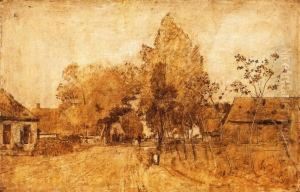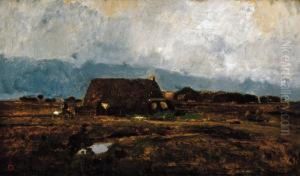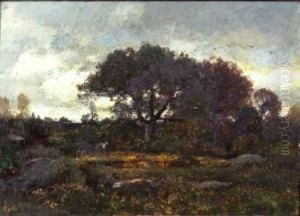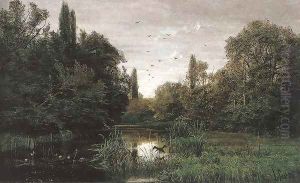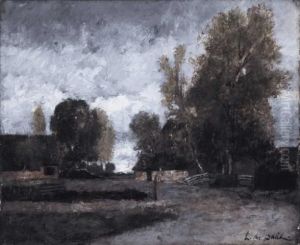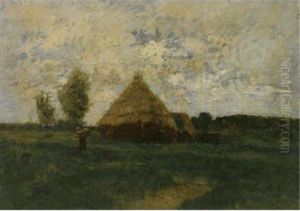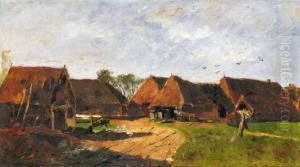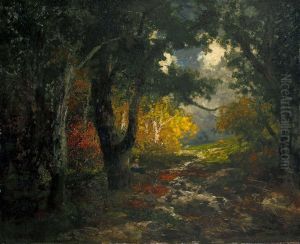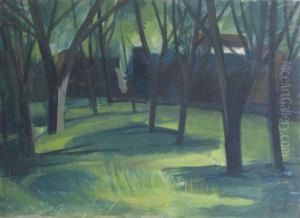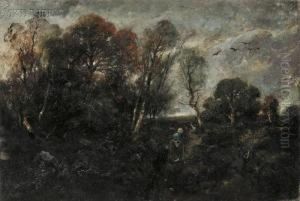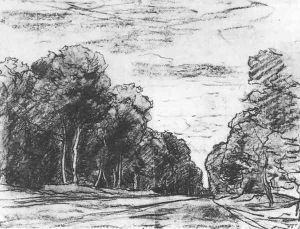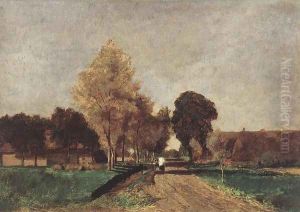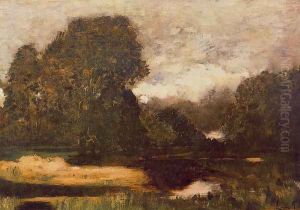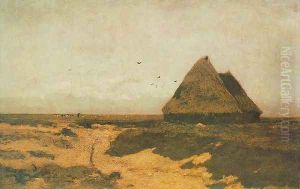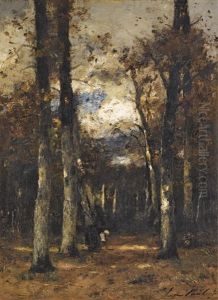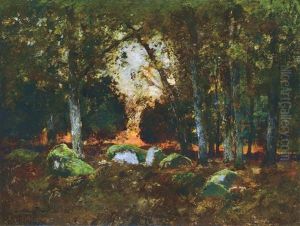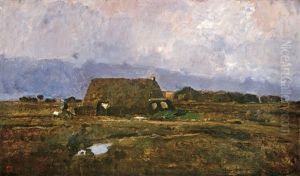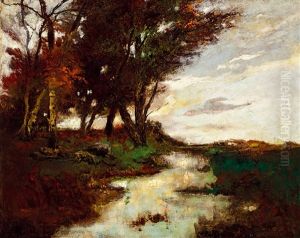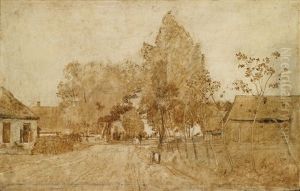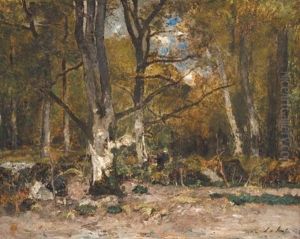Laszlo Paal Paintings
László Paál was a Hungarian painter, known for his landscape paintings that capture the essence of the Barbizon school. Born on July 30, 1846, in Békéscsaba, Hungary, Paál showed an early interest in art, a passion that would define his brief life.
Initially, he studied under Székely Bertalan in Hungary, but his artistic journey took a significant turn when he moved to Paris in 1866. There, he became deeply influenced by the Barbizon school, a movement that emphasized the beauty of the rural landscape and the truthful depiction of nature. The Barbizon painters, including Jean-François Millet, Théodore Rousseau, and Charles-François Daubigny, had a profound impact on Paál's style and subject choice.
In Paris, Paál also studied under the guidance of Alexandre Cabanel at the École des Beaux-Arts, further honing his skills. However, his heart lay in the forest of Fontainebleau, where he could immerse himself in the natural environment that inspired his work. Paál's paintings are characterized by a sensitive rendition of light and a palette that often used subdued earth tones, capturing the serene and sometimes melancholic atmosphere of the forest scenes.
Despite his foreign origins, Paál became well integrated into the French art world. He exhibited his work at the Paris Salon and was well-received by critics and the public alike. His landscapes are considered to be some of the most beautiful and evocative representations of the Barbizon tradition, and he is credited with spreading the influence of the Barbizon school back to his native Hungary.
Tragically, Paál's life and career were cut short when he passed away on March 4, 1879, in Gennevilliers, France, at the young age of 32. His early death meant that his body of work was relatively small, but his contribution to the art world remains significant. Today, László Paál's paintings can be found in numerous galleries and collections, both in Hungary and abroad, and he is celebrated as one of Hungary's most important 19th-century painters.


